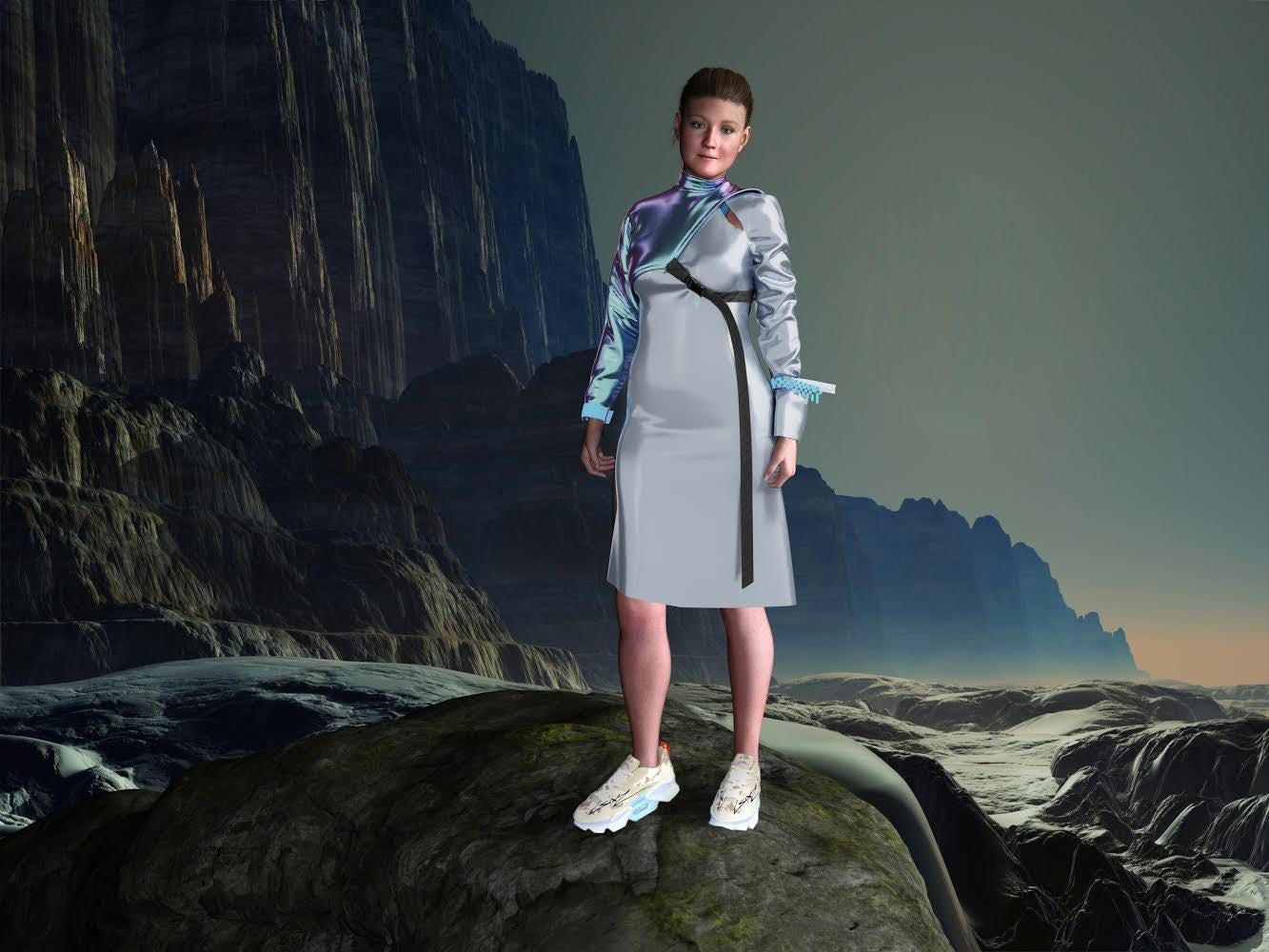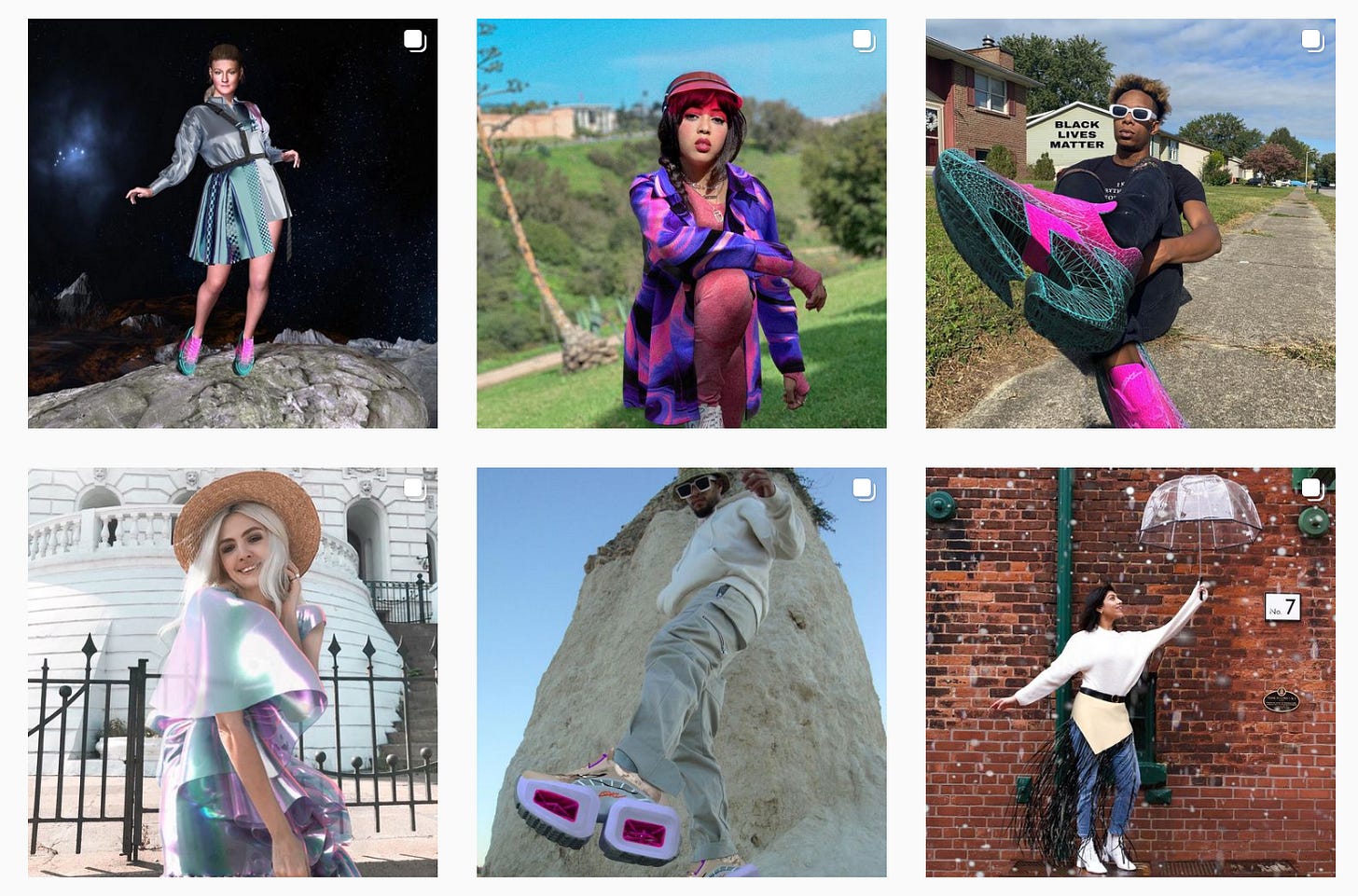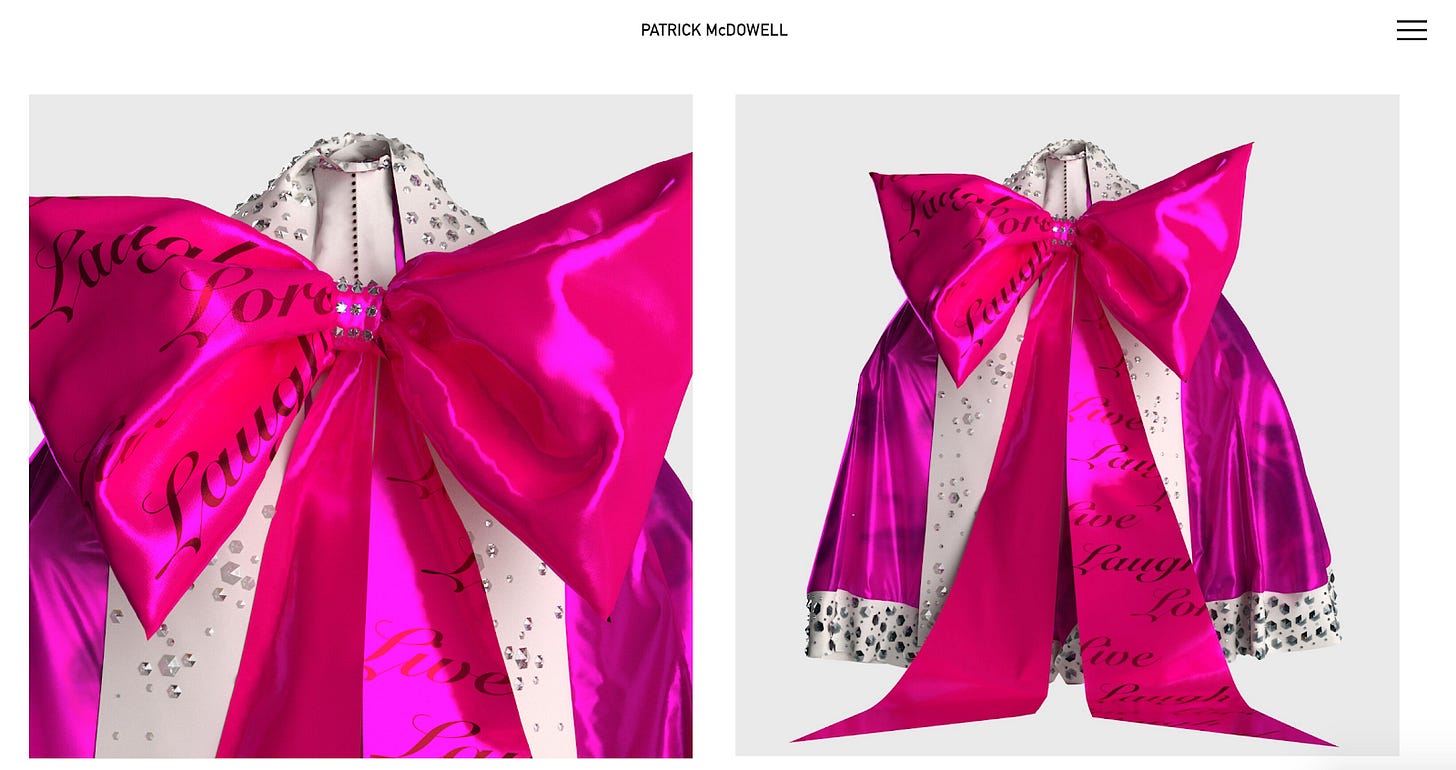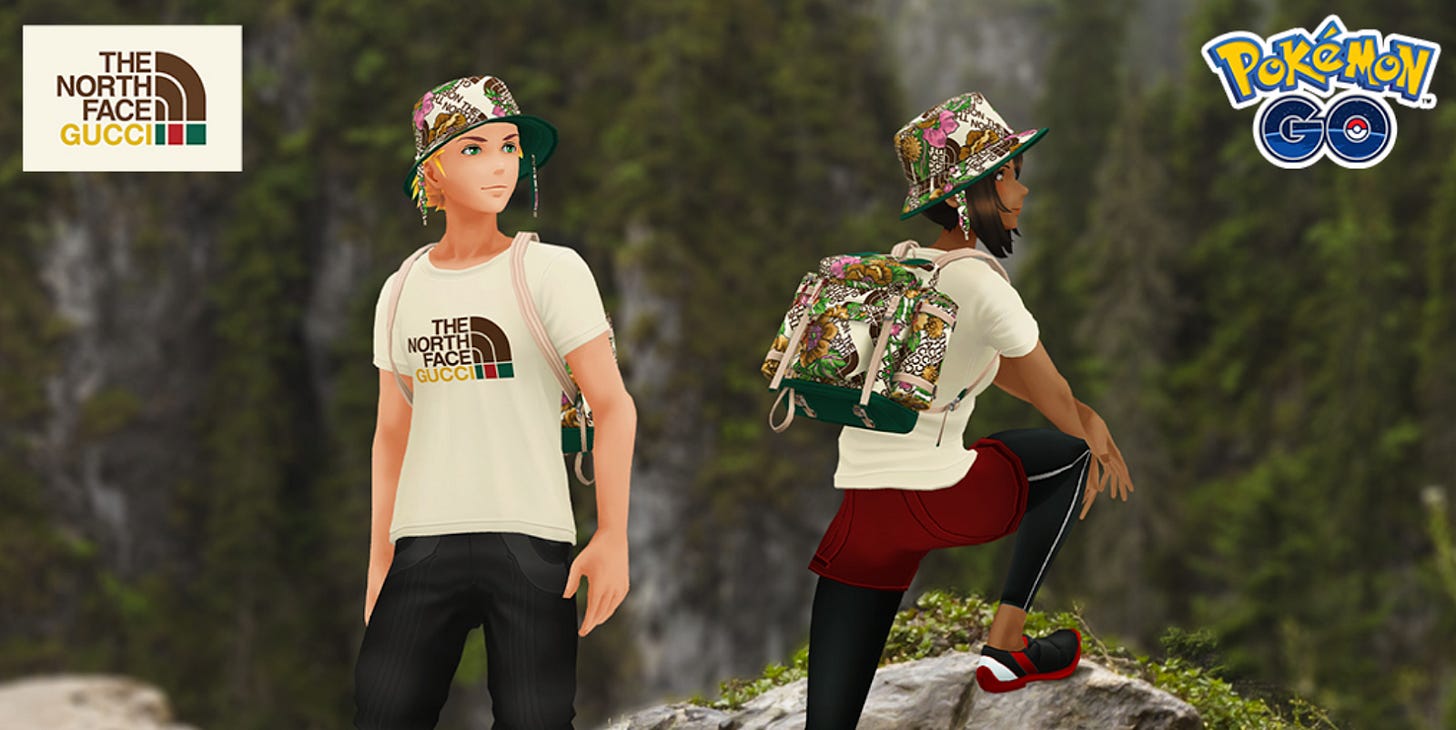A Tik here and a Tik there, your mind flashes back to January 2018, when The Fabricant, the world’s first Digital Fashion House, launched with a bold and ambitious vision: establishing the grounds for a new sector of digital-only clothing. To achieve this, the brand uses photo-realistic 3D fashion design as well as animation tools and techniques from the film visual effects industry. The end goal? Hyper-real digital fashion experiences that have no equal in real life.
Sounds as wild as those dreams you have on weekends, right? Please don’t roll your eyes at what may look like another marketing moment, or something very futuristic. Is it that far from your considerations and day-to-day life? The truth is that it isn’t. Since the launch of The Fabricant, many brands have followed suit. So yeah, believe it or not, you’ll probably be indulging in digital fashion sooner than you think.
Rethinking our fashion consumption – its time!
Before diving into the subject, what is exactly virtual fashion? It’s any type of fashion article that exists in the digital world. It can take many forms, like skins for avatars in gaming, or digital outfits that can be worn by humans. (View a Before/After picture here) Put simply: it’s a way to dress up digitally.
Understanding the ground for this emerging shift is key and there are many reasons why digital fashion is growing, making its mark and is here to stay.
1- The first one is a noticeable rise in awareness of just how unsustainable the fashion industry is. A not-so-fun fact is that it accounts for 10 per cent of all humanity’s carbon emissions. That’s more emissions than all international flights and maritime shipping combined – mind-boggling. And there is more: 30 per cent of global production is destined to end up in landfills or incineration within 12-18 months and that the average wearing time for fast fashion brands keeps decreasing. For more eye-opening stats on the subject, you can read this article from the World Economic Forum.
2- The second one is linked to the evolution of our society towards a more pronounced digital reality, hinting at the rise of the Metaverse. Today, we are sitting calmly in between a test and the learning phase - rethinking our digital lives and what we need in this life, thus, our digital assets. With 100 million images downloaded daily on Instagram alone, content becomes a major asset. It will be fair to say that they are as important as our physical assets. Now, knowing all this, tell me, in a time and place when we are increasingly living an online life, why shouldn’t we add some fun to it and make it worth it?
I know you are smart. You know exactly where I am coming from. Precisely, at the intersection of these two trends, that’s where virtual fashion, or digital fashion, make the magic happen.


Keep your eyes on new pioneers leading the way
If I have your full attention, you probably recall me writing in the introduction that many brands have jumped on this trend, right? Well, to start with, you have the new digital-savvy players going full-on digital fashion.
For your interest, the first one you need to check out is the DTC virtual brand The Tribute. They were one of the first to launch back in April 2020. Another notable brand in this space is Republiqe. Multi-brand retailers have also started popping up such as XR Couture, Replicant or Dress-X.
So, the question everyone has is: How do these brands work on the B2C side? Well, quite simply, in fact:
1/ You photograph yourself (explanations here on how)
2/ You select and pay for the garment (Still or a motion version)
3/ Within one to six days, “digital tailors” will virtually overlay the garment on your photo. Once you receive it, you are all set to share you “wearable artwork” on social media.
If you are one of those uniquely-styled people, don’t worry, there’s a place for everyone. If digital fashion brands don’t carry inventory, many are opting for scarcity, limiting the availability of an item to increase exclusivity. The good news is that some brands even go further and enable you to request a personalized order. Other retailers, such as XR Couture, allow for additional personalized edits to your photo (special effects, characters, etc.)
Bear in mind that we are in the early stages of this growing trend. In the future, the process will be much faster and automated. In the blink of an eye, those gorgeous digital clothes of yours won’t just be in pictures but on video-calls. XR Couture founder and creative director Subham Jain predicts a subscription-based service à la Snapchat filters where your hottest filters will be new pieces of clothing. (You can also check AR apps like Vyking or Clometrica to sense the soon-to-be new normal)
In an interview with French magazine Numero, the co-founder of Dress-X, Daria Shapovalova explains that after some research, she discovered that nine per cent of customers in developed countries buy new clothes intending to take a photo for their social networks. You probably even recall reading stories about Instagram influencers buying clothes to post on Instagram before returning them. The point is that these brands have created a new way to buy content to feed these social media posts. More sustainable, more fun.

Fascinating right? But don’t just scratch the surface, look at what’s below the iceberg… the hundred - and soon thousands - of passionate digital fashion designers out there. These are people like you and me; it’s Alexander, it’s Kate, it’s Edward, it’s Mary. The common names of people walking on two legs and breathing the same air. Do you get it? This is a consumer-led trend, that’s how big it is and it is time that we open our minds as wide as we open our eyes.
Traditional players are already on the bandwagon!
The part that makes this really astonishing is that traditional players are also experimenting with digital fashion from different angles.
Patrick McDowell, for instance, is a designer who launched a collection called “Catholic Fairytales” during Helsinki’s Fashion Week. Here, it’s all about the experience and the creativity. Go take a look, read the collection manifesto description, and you’ll understand my point. I still have glitter in my eyes. I might save my tears, just in case they turn into diamonds.
But crafting an experience that becomes the light in a dark room isn’t the only answer. We have to make sure that there is a switch in the room to spark something. Following this, some brands have taken a practical approach, seeing the surge in gaming and crafting digital collections for a very concrete gaming experience. The notorious examples include Gucci x North Face’s collection for Pokémon Go. A real eye-opener, and there are many more. Fashion gaming apps such as Drest or Aglet (a sneaker game) also open up new creative horizons.
Then, you have the phygital experiences. Brands taking the “bits and atoms” perspective. Here I’ll give you two examples I’m particularly fond of. Let me tell you why they live in my heart and mind rent-free.
The first one is a fashion brand called Carlings. One of their collections sells interactive statement tee-shirts. In other words, it’s a physical shirt for you to buy that you can digitally enhance through a custom version of a Facebook / Instagram filter. By doing so, you can activate your shirt each day with a new digital message that you can share on social media. All that — as the website states — without buying another shirt. How flipping smart, right? I know I’m fantasizing, but imagine all the things you can do without sliding yourself into another shirt. A future with “fashion learning” brands: each day, a new important lesson for you to discover on your shirt, like spaced repetition in a gamey way. Learning that doesn’t feel like learning.
A second example I like very much is Auroboros’ (Alexander McQueen) biomimicry digital fashion. Look closely, and you’ll notice that they have a line of merch associated with real products that mimic the look and feel of digital fashion. Like a phone case that is eco-friendly and 100 per cent biodegradable. But if you scroll down, you’ll also see Zoom backgrounds. For those who downloaded my social media trends report (and for those who haven’t, you can still buy it here), remember that I said that brands need a hub to store digital goods for their consumers’ online experiences? That’s the start, my friend. That’s where everything starts.
Buckle up, there is more to come

From a consumer point of view, there are many reasons why you would want to wear digital fashion, specifically if you are part of the GenZ. Digital fashion can allow you to express your creativity with garments you wouldn’t wear in the real world. It can also allow you to gain access to “Haute Couture” pieces that you would never have dreamt of having before. It’s all part of a bigger picture – where creativity wins.
From a brand perspective, it’s a way to reconcile sustainability imperatives with new ways to appeal to consumers online, new experiences as I explained earlier. But it can also take other forms, it’s not solely for entertainment. Having digital twins of your collections for consumers to play around with can unlock many opportunities. Imagine if you used them before the launch of a physical collection to determine the bestsellers and then adapt your production? Think about how much traffic you can gather and even get this stacked upon the pre-order list just because you activated your creativity and understood how to benefit from it.
However, for these experiences to become next level in consumers’ lives, we need full control and ownership of these digital fashion assets. This way we can own, manage and trade in different places and expand. Companies such as Lukso and Dematerialised are tackling this exact challenge by authenticating these 3D assets on a blockchain.


Another company worth watching in this space is Digitalax, a digital fashion tool stack and digital-only fashion NFT auction platform built on the Ethereum blockchain. Their goal? Enable self-expression for the gaming, VR and 3D digital content space.
"The world's next Coco Chanel is probably a 10-year-old girl who is currently designing avatar skins in Roblox", writes tech futurist Cathy Hackl in a Forbes article. You are not living a Black Mirror Episode, this is a new fashion cult. So, the burning question is: are you ready to embrace it?
Marie
Style Acute released in April 2020, a 3D #FashionTech Map (A 2021 edition is on its way).
A newsletter bundle on Trends featuring some of my favorite thinkers is coming to the market. I’ve already subscribed, you should too.
First 1000 is another newsletter that I really enjoy reading.











If the amount of care that goes into meticulously editing an Instagram photo or caption hints at anything, it’s that our intention for how we’re perceived online is boundless.
I think digital clothes opens a Pandora Box of possibilities...
If after all, there are multiple selves online (me on Reddit vs. me on Snapchat), how do we value each? Will we purchase looks for each of our personas online, or only for those that we prioritize? Most dystopian, will we ever reach the point where spend as much time and money on our online selves as our physical one?